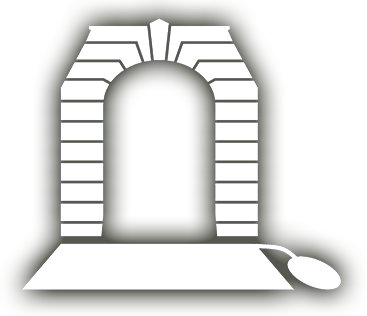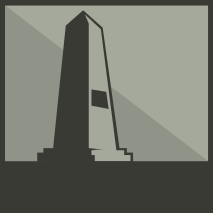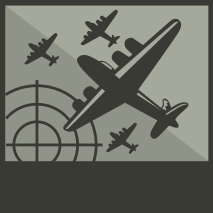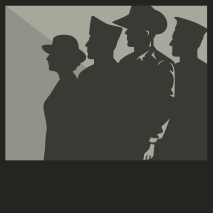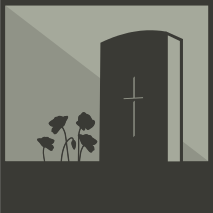
MARTIN, Thomas Andrew
| Service Number: | 880 |
|---|---|
| Enlisted: | 16 December 1915, Brisbane, Queensland |
| Last Rank: | Sergeant |
| Last Unit: | 42nd Infantry Battalion |
| Born: | Cohuna, Victoria, Australia,, 1890 |
| Home Town: | Woodford, Moreton Bay, Queensland |
| Schooling: | Wee Wee Rup, State School, Victoria, Australia, |
| Occupation: | Farmer / Labourer |
| Died: | Killed in Action, France, 1 September 1918 |
| Cemetery: |
Sailly-Saillisel British Cemetery |
| Tree Plaque: |
Woodford Avenue Of Honour
|
| Memorials: | Australian War Memorial Roll of Honour, Brisbane 42nd Infantry Battalion AIF Roll of Honour, Woodford Honour Roll, Woodford Methodist Circuit Roll of Honour |
World War 1 Service
| 16 Dec 1915: | Enlisted AIF WW1, Private, 880, Brisbane, Queensland | |
|---|---|---|
| 5 Jun 1916: | Involvement AIF WW1, Lance Corporal, 880, 42nd Infantry Battalion, Enlistment/Embarkation WW1, --- :embarkation_roll: roll_number: '18' embarkation_place: Sydney embarkation_ship: HMAT Borda embarkation_ship_number: A30 public_note: '' | |
| 5 Jun 1916: | Embarked AIF WW1, Lance Corporal, 880, 42nd Infantry Battalion, HMAT Borda, Sydney | |
| 1 Sep 1918: | Involvement AIF WW1, Sergeant, 880, 42nd Infantry Battalion, Mont St Quentin / Peronne, --- :awm_ww1_roll_of_honour_import: awm_service_number: 880 awm_unit: 42nd Australian Infantry Battalion awm_rank: Sergeant awm_died_date: 1918-09-01 |
Help us honour Thomas Andrew Martin's service by contributing information, stories, and images so that they can be preserved for future generations.
Add my storyBiography contributed by Ian Lang
# 880 MARTIN Thomas Andrew 42nd Battalion
Tom Martin was born at Cohuna on the Victoria / NSW border to James and Ether Martin. He attended school at Wee Wee Rup with his younger brother Ernie. James and Esther moved their family north to Queensland and took a farming block in the Woodford area.
Tom attended the Brisbane recruiting depot on 16th December 1915. He informed the Lieutenant that he was 25 years old and a farmer from Woodford. Tom had attempted to enlist on a previous occasion but was rejected due to bad teeth. A common solution to dental problems at the time was to have all the teeth in the diseased jaw extracted and a full dental plate fitted. Tom reported to Thompson’s Paddock Camp at Enoggera where a new battalion, the 42nd Infantry Battalion, was being raised. Tom was placed in “D” Company.
In early 1916, four divisions of the AIF were being assembled out of original Gallipoli veterans and new reinforcements in Egypt. When up to full strength, those four divisions would be deployed to France and the Western Front and were all in place before the middle of the year. The 42nd Battalion, part of the 11thBrigade of the 3rd Division AIF would take a different route to the front.
Unlike its sister divisions, the 3rd Division would not be constructed around a core of experienced veterans. Instead, the 3rd Division battalions were raised in Australia from new recruits and then sent directly to England where a new divisional training camp was established at Larkhill near Stonehenge. The training would be overseen by the newly appointed divisional commander, Major General John Monash (who was one of the few Gallipoli veterans in the Division).
On 5th June 1916, the entire 42nd Battalion boarded trains and travelled via Wallangarra, where trains had to changed due to a change in gauge, and then on to Sydney where they embarked on the “Borda”. The embarkation roll shows that by that time Tom was a Lance Corporal. He allocated 4/- of his daily pay to be deducted for his parents. The ship took seven weeks to reach Southampton, during which time the troops were kept fit with drills and boxing matches. A mate of Tom’s noted that Tom was a good boxer and won a number of medals while at sea and in camp at Larkhill.
The 42nd spent four months in Southern England, while the rest of the AIF faced the might of the German Army on the Somme. Monash had become a minor celebrity in England as a result of his service at Anzac and his many years in the Australian Citizen Forces before the war. In a rare tribute to Monash and his division, the King, George V, travelled down to Larkhill to meet Monash and inspect the division. The King was concerned that the ‘colonials’ had insufficient clothing for the coming winter. Monash assured the King that his men were well catered for clothing wise and that his division would prove to be the best trained in the AIF. He was right.
The 3rd Division, all 22,000 men and equipment began to deploy to the continent on 25th November 1916. Just prior to the move, Tom was promoted to corporal. The 3rd Division arrived just in time for the bitterest winter in over 40 years. The ground froze, trenches filled with freezing mud leading to trench foot and there was heavy snow and frost. Very little fighting took place until the spring in March 1917. The major offensive conducted by the British in 1917 was centred on the Ypres salient in Belgian Flanders. The lessons learnt on the Somme the previous year led to a much greater reliance on planning and overwhelming artillery. The campaign called for a series of “bite and hold” battles which would, one step at a time, move the front from the Ypres ramparts to the high ground of the Broodseinde Ridge. A major obstacle was the German presence on the Messines Ridge which overlooked the flat land upon which the British would assemble their forces. The battle of Messines was timed to begin on 7th June 1917.
In preparation for the Messines offensive, a large-scale model of the terrain that troops would encounter was constructed with every pill box, strong point, trench and wire entanglements marked. In the leadup to the battle, every officer and NCO who would take part were walked through the model to familiarize themselves with the objectives for each battalion, company and platoon. As leader of a section, Tom would have taken part. For over 12 months, British and Australian tunnellers had been undermining Messines Ridge. Twenty-one caches of high explosive were packed into the tunnels directly under the German defences.
On 4th June, three days before the start of the battle, Corporal Tom Martin was wounded by shrapnel from a high explosive shell. He may have been near the front lines scouting the positions from which he was expected to lead his section three days later. Preparations were well in hand for handling the large number of casualties expected in the battle and those resources ensured that Tom was swiftly removed from the battlefield to a casualty clearing station and then an ambulance train to the 14th General Hospital at Wimereux. While in his hospital bed, Tom may have heard the roar of 19 underground mines being fired simultaneously at Messines at 3:10 am on 7th June. Tom was repatriated to the St Andrews Hospital in England for recovery. On 29th June, he was granted a two-week furlough after which he reported to the AIF camp at Perham Downs. In August, Tom reported to the overseas training base and by 22nd November was back with the 42nd Battalion in winter billets around Poperinghe in Belgium.
The latter part of 1917 produced a change in the strategic situation as far as the German command was concerned. The Bolshevik Revolution in Russia brought about the end to fighting on the Eastern Front. A peace treaty between Germany and Russia released up to sixty German divisions which, once re-equipped and re-trained, could be used to press home a distinct advantage on the Western Front. The window for exploiting this advantage was however rather small as the entry of the United States into the war and an expected surge in troop numbers from July 1918 onwards would swing the advantage back to the Entente. The German commander, Ludendorff had only a short time to press home his advantage.
The British Commander, General Haig, was fully expecting a German assault in the spring of 1918 but he guessed incorrectly that the main thrust would be aimed at the Ypres salient in Belgium. When Operation Michael began on 21st March, the main assault was aimed along the line of the Somme River, the scene of so much fighting and hard won victories in 1916.
The British 5th Army, which was holding the line astride the Somme was unable to hold the German onslaught which in some places amounted to a five time numerical advantage. As the British retreated, often in disarray, the German Stormtroopers retook all of the gains made by the British in the Somme campaign and were within a few days of capturing the vital communication city of Amiens. If Amiens fell, Haig might well have lost the war; the situation was deadly serious.
Haig ordered his most successful and battle-hardened troops, four of the five divisions of the AIF in Belgium to race 150 kilometres south to establish a defensive line in front of Amiens. The 3rd Division, still under the control of Monash, took up defensive positions on the north bank of the Ancre River at Heilly, blocking the main road from Albert to Amiens. The German assault continued to probe all along the defensive screen established by the AIF and British Regiments until a daring nighttime pincer movement at Villers Bretonneux by two AIF brigades on 25th April halted the enemy advance. Amiens was saved but the German forces were not defeated. Throughout May, the AIF brigades were encouraged to engage in “peaceful penetration” which consisted of night trench raiding, harassing machine gun fire and capturing of enemy soldiers for intelligence gathering. This activity un-nerved the German infantry.
In June, Monash was promoted to Lieutenant General and was placed as command of the entire AIF corps. Monash quickly moved his forces from defence to offense. His first offensive operation was at Hamel on 4thJuly. Using a daring coordinated plan involving tanks, artillery, air power and deception, the objective was reached just three minutes later than the General’s plan of 90 minutes. The success of Hamel, in which Tom and the 42nd Battalion took part cemented Monash’s reputation as a brilliant planner. One month later, a far more ambitious battle was planned primarily by Monash which employed all five AIF Divisions, three Canadian Divisions and two British Divisions. Using the tactics which had worked so well at Hamel, and with a greater number of field guns and tanks, the 2nd and 3rd Divisions of the AIF set off from the start line at 3:10am. Tom Martin, who had recently promoted to sergeant, led his platoon into the fog and smoke for three and a half kilometres until they reached the Green Line. As the battalions of the 2nd and 3rd Divisions dug in, they were leapfrogged by the 4th and 5th Divisions who once in open country were able to push on for another eight kilometres.
The Battle of Amiens on the 8th August 1918 was the largest single victory by British forces in the war. Thousands of enemy troops meekly surrendered, vast quantities of war material such as mortars, machine guns and field guns were captured. Much of this material found its way back to Australia as war trophies which were presented to local councils and returned servicemen’s associations. The German commander, Eric Ludendorff, described 8th August as the German Army’s blackest day. Monash, whose corps had been the primary spearhead of the victory, was lauded by British and French generals and Field Marshalls. King George V came to Monash’s HQ and invested him with a knighthood; Knight Grand Cross of the Order of St Michael and St George.
After Amiens and the pursuit of the enemy back to the Hindenburg Line, the end of the conflict, which up until that time was thought to continue into 1919 and even 1920, was clearly in sight. Monash drove his men on in battle after battle. The number of Germans surrendering increased and much of the structure of the German army was fractured. The 42nd Battalion pressed forward at a blistering pace, but as the casualties mounted, the battalion strength withered from around 800 to less than 250.
By the end of August, the AIF had driven the German forces back along the Somme to the ancient fortress town of Peronne. For the momentum of the advance to be maintained Peronne needed to be taken. Peronne was located at a point of the Somme where the river takes a 90 degree turn. As well as the defences within the town, Peronne was overlooked by a hill 100 metres high; Mont Saint Quentin. Monash planned to put three of his divisions into the battle of Peronne; the 5th Division would attack the fortress itself, the 2ndDivision would take the heights of Mont Saint Quentin, and the 3rd Division had the job of protecting the 2ndDivision’s uphill charge by taking the Bouchavesnes Spur to the north.
When the attack began on 1st September, the 2nd and 3rd Division Battalions were instructed to yell loudly “like a bunch of bushrangers” to conceal the thinness of their attack. Monash, who knew his men were almost done in told his Brigadiers that casualties no longer mattered. As the 42nd Battalion men raced up the slope of the spur, one of Tom’s Lewis Gunners was hit. According to witnesses, Tom, upon seeing corporal McMannus fall, turned to retrieve the precious machine gun. A burst of enemy machine gun fire hit Tom in the back, killing him instantly. Tom was buried in an isolated grave on the battlefield. A respondent to requests from the Red Cross stated that a Corporal Roy Martin, Tom’s brother attended the gravesite. Roy Martin was Tom’s cousin, not brother.
At war’s end, Tom’s remains were exhumed and reburied in the Sailly Saillisel British Cemetery. The inscription on his headstone reads: IN MEMORY OF THE DEARLY LOVED SON OF MR. & MRS. MARTIN QUEENSLAND, AUSTRALIA
Tom’s name appears on the Woodford Methodist Roll of Honour and a memorial Tree was planted in the Avenue of Honour.

